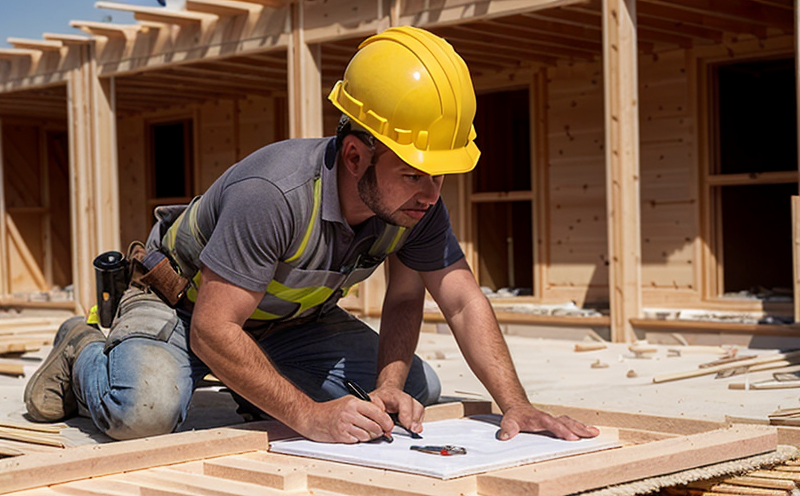Certification for Safety in Building Materials: A Crucial Aspect of Construction
The construction industry has witnessed a significant transformation over the years, driven by evolving regulatory requirements, technological advancements, and growing awareness about safety and sustainability. Among these developments, certification for safety in building materials has emerged as a vital aspect of ensuring the integrity and security of buildings. In this article, we will delve into the world of certification for building materials, exploring its importance, types, and benefits.
The Importance of Certification for Safety in Building Materials
Building materials play a critical role in shaping the structure and safety of a construction project. From foundation to finish, every material used has the potential to impact the overall performance and durability of the building. However, numerous studies have highlighted the alarming rate at which building materials are causing hazards, ranging from structural instability to health risks. According to a report by the World Health Organization (WHO), approximately 7 million people die annually due to environmental factors related to construction activities.
In response to these pressing concerns, regulatory bodies and industry stakeholders have emphasized the need for robust certification programs that guarantee the safety of building materials. Certification ensures that products meet specific standards, are manufactured using responsible practices, and comply with regulations. By prioritizing material safety, constructors can minimize risks associated with building failure, injuries, and fatalities.
Types of Certifications for Building Materials
Several types of certifications exist to ensure the quality and safety of building materials:
Compliance certifications: These attest that a product meets specific regulatory requirements, such as fire-resistance ratings or acoustic standards.
Performance-based certifications: These assess the actual performance of a material under various conditions, like its ability to resist weathering or maintain structural integrity.
Eco-labels and sustainability certifications: These recognize products that minimize environmental impact through responsible manufacturing practices, recyclable materials, and reduced waste.
Third-party audits and testing certifications: These involve independent assessments to verify the accuracy of product labeling, claims, or performance characteristics.
Benefits of Certification for Safety in Building Materials
Certification offers numerous advantages:
1.
Improved safety: Compliance with regulatory standards reduces the risk of accidents and injuries resulting from hazardous materials.
2.
Enhanced durability: Certified products are more likely to withstand environmental stresses and maintain structural integrity over time.
3.
Increased transparency: Labeling ensures that consumers, builders, and regulators can identify responsible practices and products that meet safety criteria.
4.
Competitive advantage: Companies adopting certification programs demonstrate a commitment to quality, which can boost customer trust and loyalty.
Some of the most significant benefits of building material certifications are:
Reduced risk of property damage and financial losses due to structural failures
Enhanced reputation for companies prioritizing safety and sustainability
Better compliance with regulations and industry standards
Improved public perception and trust in construction projects
Here are some key points about certification programs and their role in ensuring building material safety:
Certification Programs and Processes
Most certification bodies follow a similar process to evaluate products and assign ratings. This may include:
1.
Application submission: Manufacturers submit product details, testing results, and documentation for review.
2.
Assessment and audit: Experts conduct site visits, examine test data, and inspect facilities to verify claims and compliance.
3.
Rating assignment: Based on the assessment findings, a rating is assigned according to predefined standards (e.g., fire-resistance, acoustic performance).
4.
Labeling and listing: Certified products receive labels or listings that enable consumers, builders, and regulators to identify compliant materials.
Some of the key organizations providing certification programs for building materials are:
International Code Council (ICC)
American Society for Testing and Materials (ASTM)
Underwriters Laboratories (UL)
International Organization for Standardization (ISO)
Eco-Friendly Certification
Green building is increasingly becoming a mainstream priority due to its potential environmental benefits. Some eco-labels and certifications include:
Leadership in Energy and Environmental Design (LEED) from the United States Green Building Council (USGBC)
Passive House certification by the Passive House Institute (PHI)
FSC-certified wood products for sustainable forestry practices
Cradle to Cradle Product Rating by the Cradle to Cradle Products Innovation Institute
QA Section: Additional Details on Certification for Safety in Building Materials
1.
What are some common certification programs for building materials?
LEED, Passive House, FSC-certified wood products, and Cradle to Cradle Product Rating are popular certifications.
2. Who provides these certifications?
Organizations like ICC, ASTM, UL, and ISO offer certifications.
3. What is the process for obtaining certification?
Manufacturers submit applications, undergo assessments, audits, and testing to obtain ratings.
4. How do consumers identify certified products?
Labels or listings provided by certifying bodies enable easy identification of compliant materials.
5. Can certification guarantee safety in building materials?
Certification significantly reduces risks but cannot eliminate them entirely; ongoing monitoring is essential.
Certification for safety in building materials has become an essential aspect of construction projects. By understanding the different types of certifications, their benefits, and processes involved, constructors can minimize risks associated with hazardous materials, enhance durability, and contribute to a more sustainable built environment.

































